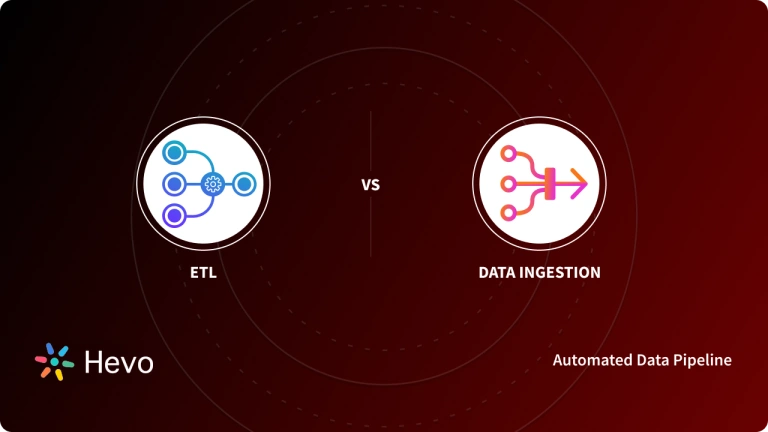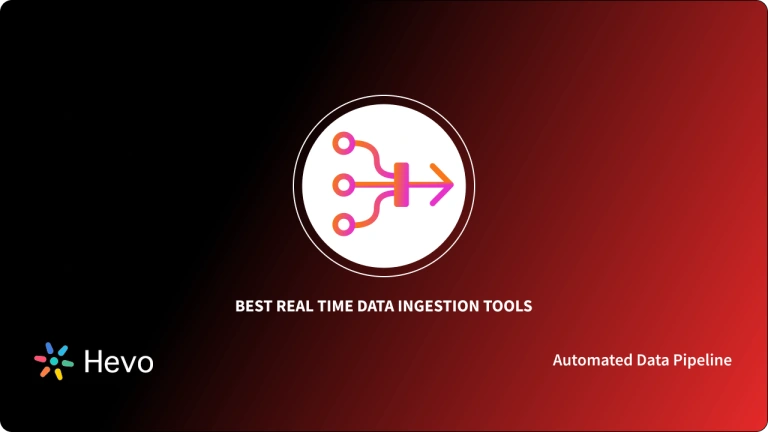As businesses continue to generate and collect large amounts of data, the need for automated data ingestion becomes increasingly critical. The process of ingesting and processing vast amounts of information can be overwhelming.
However, with the advancements in automation technology, the data ingestion process can now be fully automated, resulting in faster and more accurate data processing. It can help organizations keep up with the pace of data growth and stay ahead of the competition. Dive into this article to know why you need to automate data ingestion and how to do it.
Table of Contents
What is Data Ingestion?
Data ingestion refers to the process of collecting and importing data from various sources into a storage medium so that it can be utilized later for data analytics and reporting purposes within an organization. Typically, data ingestion is one of the initial stages of the data management cycle and involves using ingestion tools to collect, import, and process the data.
Typically, the process of data ingestion involves three main steps:
- Data Extraction: This involves retrieving data from various sources.
- Data Transformation: In this step, the data is validated, cleaned, and standardized to ensure that it is accurate and reliable for analysis.
- Data Loading: Once the data has been transformed, it is placed in a database or storage location, where it can be accessed and analyzed.
Looking for an automated ETL tool to ingest your data? With over 150+ sources (60+ free), load data into your destination with Hevo’s automated pipeline. Why choose Hevo?
- Tailor your data with features like drag-and-drop and custom python scripts.
- Connect with Live Support, available 24/5.
- Automatically map your schema from source to target.
Start your 14-day free trial and discover how Hevo makes data ingestion effortless.
SIGN UP HERE FOR A 14-DAY FREE TRIAL!Reasons to Automate Data Ingestion
Here are some reasons why you should automate data ingestion:
Handles a Wide Variety and Large Volume of Data
Tools for data ingestion can process a vast range of data formats, including structured, semi-structured, and unstructured data. Structured data refers to data that is well-organized and formatted in a specific way, such as data in a spreadsheet or database. Semi-structured data refers to data that has some structure but may not be fully organized, such as data in XML or JSON format.
Unstructured data, on the other hand, refers to data that does not have a specific format, such as text documents, audio and video files, social media posts, and images.
One of the benefits of using data ingestion tools is that they can handle a sizable volume of unstructured data, which is becoming increasingly prevalent in today’s digital world. These tools can extract, process, and store large volumes of unstructured data quickly and efficiently, making it possible to gain valuable insights from this data.
Improves Employee Productivity
Automated data ingestion saves data professionals time and effort that would have been spent creating and maintaining customized ETL jobs. This allows them to concentrate on enhancing customer service or improving product performance.
In some companies, data engineers create an in-house ETL tool for non-technical users, but this approach is not faster and will require ongoing maintenance. For example, you can use Kafka as a streaming platform to build your own ETL tool. You can ingest data from sources into Kafka and then push it into a destination. This method has its disadvantages, like maintaining Kafka is a tedious task, and the entire process requires a lot of bandwidth.
Better Data Accessibility
Automated data ingestion can make data more accessible to team members, allowing them to access the data they need. This can improve collaboration and communication within the team, leading to better decision-making and outcomes.
Reduces Scope of Error
There is always a risk of human error in the data ingestion process. You could also fall behind because you can’t ingest at the same pace that it comes in. This could lead to a situation where the only way you can catch up is by letting go of all the data. This is a waste of resources.
Automated data ingestion tools can be programmed to validate and verify data as it is collected. This can include checks for missing data, outliers, and other anomalies that may not be immediately evident to a human. By detecting errors early, the scope of the error can be limited, and corrective action can be taken quickly.
How to Automate Data Ingestion?
Automating data ingestion involves creating a system that automatically collects, processes, and stores data from various sources without human intervention. Here are some steps to automate data ingestion:
- Define your data sources: Identify the data sources you want to ingest. These could include databases, APIs, files, and other sources.
- Select an automation tool: Select a tool or platform like Hevo to automate the ingestion process.
- Define data extraction and transformation: Define how you want to extract the data from the sources and how you want to transform it for storage. This could involve cleaning the data, reformatting it, or combining data from multiple sources.
- Set up automated workflows: Use your automation tool to set up workflows that define how data will be ingested and transformed. These workflows should include steps for extracting, transforming, and loading the data.
- Monitor and troubleshoot: Set up alerts and monitoring systems to ensure that your data ingestion process is running smoothly. You should also be prepared to troubleshoot any issues that arise.
Scale and Automate Data Ingestion using Hevo to Unlock Your Business Growth
Hevo provides an Automated No-code Data Pipeline that assists you in ingesting data in real-time from 150+ data sources but also enriching the data and transforming it into an analysis-ready form without having to write a single line of code. Its fault-tolerant architecture ensures that the data is handled in a secure, consistent manner with zero data loss. Adding to its flexibility, Hevo provides several Data Ingestion Modes such as Change Tracking, Table, Binary Logging, Custom SQL, Oplog, etc.
Hevo’s fault-tolerant architecture will enrich and transform your data securely and consistently and load it to your destination without any assistance from your side. You can entrust us with your data transfer process by both ETL and ELT processes to a data warehouse and enjoy a hassle-free experience.
Here are more reasons to try Hevo:
- Smooth Schema Management: Hevo removes the tedious task of schema management & automatically detects the schema of incoming data and maps it to your schema in the desired Data Warehouse.
- Exceptional Data Transformations: Best-in-class & native support for complex data transformation at fingertips. Code & no-code flexibility is designed for everyone.
- Quick Setup: Hevo, with its automated features, can be set up in minimal time. Moreover, with its simple and interactive UI, it is extremely easy for new customers to work on and perform operations.
- Built To Scale: As the number of sources and the volume of your data grows, Hevo scales horizontally, handling millions of records per minute with very little latency.
- Live Support: The Hevo team is available round the clock to extend exceptional customer support through chat, email, and support calls.
So in this article, you read about 4 reasons to automate data ingestion and how to do it using tools that will help you.
Want to take Hevo for a spin? Sign up for a 14-day free trial and simplify your data integration process. Check out the pricing details to understand which plan fulfills all your business needs.
Frequently Asked Questions
1. What is automated data ingestion?
Automated data ingestion refers to the process of automatically importing and integrating data from various sources into a target system, such as a data warehouse, data lake, or database.
2. What is auto ingestion?
Auto ingestion is essentially another term for automated data ingestion. It emphasizes the automatic and seamless process of data collection and integration from various sources into a target system.
3. How do you automate data processing?
Data processing can be automated by setting up ETL workflows to handle data extraction, transformation, and loading automatically using tools like Hevo, AWS Glue and Azure Data Factory.




